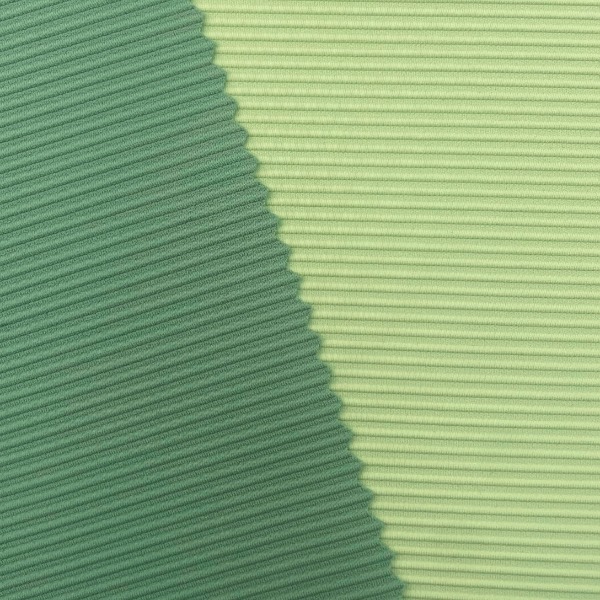Choosing the right fabric is the cornerstone of creating high-performance, durable, and stylish swimwear. Among the various materials available, polyester fabric for swimwear has emerged as a dominant force, prized for its exceptional resilience, color retention, and eco-friendly potential. This guide delves deep into the world of polyester swimwear, exploring its benefits, technical aspects, and how it compares to other fabrics, empowering you to make an informed decision for your next swimsuit.
Polyester is a synthetic fabric renowned for its strength and versatility. In the context of swimwear, it offers a unique set of advantages that make it a preferred choice for competitive swimmers, recreational users, and environmentally conscious consumers alike. Its polymer-based structure is engineered to withstand the harsh conditions of chlorinated pools and salty oceans while maintaining its shape and vibrancy over time.
While 100% polyester offers great durability, it often lacks the necessary stretch for a comfortable, form-fitting suit. This is where fabric engineering comes into play. The best polyester blend for swimwear durability typically incorporates a small percentage of elastane (also known as Spandex or Lycra). This combination creates a fabric that leverages the strength of polyester and the elasticity of elastane.
The key to durability lies in the blend ratio. A higher percentage of polyester ensures longer life, while just enough elastane (usually 15-20%) provides the needed stretch without compromising the fabric's core strengths.
To understand where polyester blends stand, it's helpful to compare them to other common materials. The following table outlines the key characteristics of each, highlighting the performance trade-offs.
| Fabric Type | Durability & Chlorine Resistance | Stretch & Recovery | Drying Time | Typical Use |
| Polyester/Elastane Blend | Excellent | Very Good | Very Fast | Competitive, Fitness, Everyday |
| Nylon/Elastane Blend | Good (but prone to chlorine damage) | Excellent | Fast | Fashion, Everyday |
| 100% Polyester | Exceptional | Poor | Fastest | Competitive, Lap Swimming |
| Neoprene | Excellent | Fair (compression fit) | Slow | Water Sports, Thermal Protection |
For anyone who spends significant time in a pool, chlorine resistance is not a luxury—it's a necessity. Chlorine, used to keep pools sanitary, is a harsh chemical that breaks down elastic fibers, leading to the dreaded saggy, baggy, and faded swimsuit. The benefits of chlorine resistance in swimwear provided by polyester are multifaceted.

75%-Nylon 25%-Spandex Weight-270gsm Width-158cm RIB FABRIC
As sustainability becomes a critical concern for consumers, the question of "is recycled polyester swimwear sustainable" is more relevant than ever. Recycled polyester (rPET) is primarily made from post-consumer plastic bottles, diverting waste from landfills and oceans.
However, it's important to note that rPET is still a synthetic fabric. It sheds microplastics during washing, which can enter waterways. To mitigate this, consumers should use Guppyfriend bags or other microfiber filters and opt for less frequent washing. Therefore, while not a perfect solution, recycled polyester represents a significant and meaningful step towards more sustainable swimwear fabric production.
Investing in high-quality polyester fabric for swimwear is the first step; proper care is the second. Correct maintenance can double or even triple the lifespan of your swimsuit, protecting your investment and reducing waste.
For durability and chlorine resistance, polyester is superior. Nylon/elastane blends are softer and offer more stretch, making them popular for fashion-focused swimwear. However, nylon is more susceptible to damage from chlorine and sunscreen, leading to a shorter lifespan compared to polyester. For frequent pool use, polyester is the better choice.
Polyester itself is less prone to holding odor than natural fibers because it dries quickly, preventing bacteria growth. However, odors from body sweat, sunscreen, and chemicals can adhere to any fabric. Proper and immediate rinsing after use is the most effective way to prevent any swimwear, including polyester, from developing persistent odors.
With proper care, a high-quality polyester swimsuit used for regular lap swimming (3-4 times a week) should last between 6 months to a year. For recreational use, it can easily last several seasons. The sign that it needs replacing is when the fabric becomes thin, loses its compression, or the fit becomes loose and saggy.
It is not recommended. The agitator in a washing machine can be too harsh on the delicate elastic fibers, causing premature wear and tear. The best practice is to always hand wash your swimwear. If you must use a machine, place the suit in a mesh lingerie bag, select the gentlest cycle (delicates), use cold water, and skip the spin cycle.
Yes, recycled polyester is an excellent material for swimwear. It offers the exact same performance benefits as virgin polyester—including high durability, chlorine resistance, and quick-drying properties—with the added advantage of a reduced environmental footprint. It is a leading material in the movement toward more sustainable swimwear options.